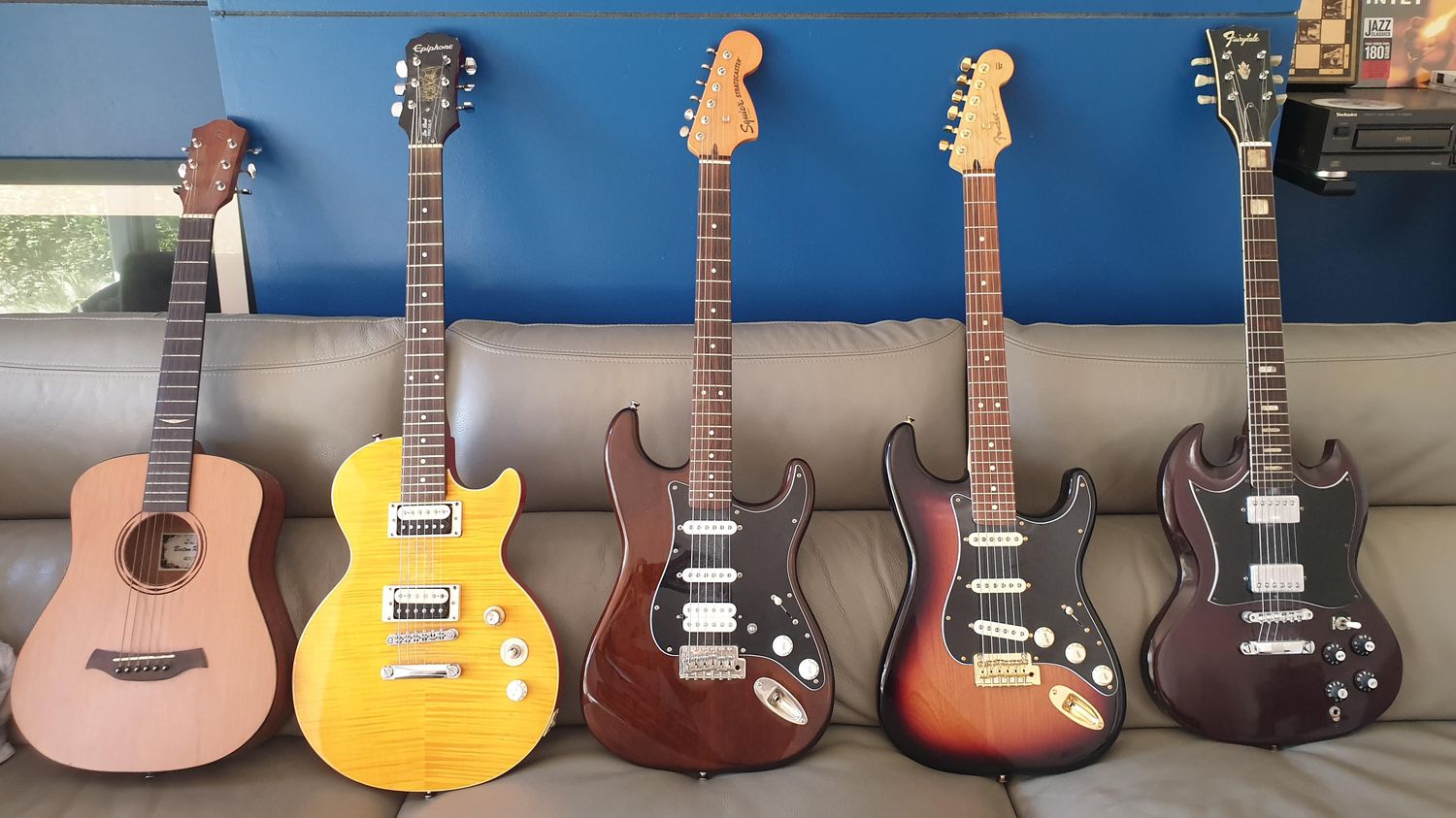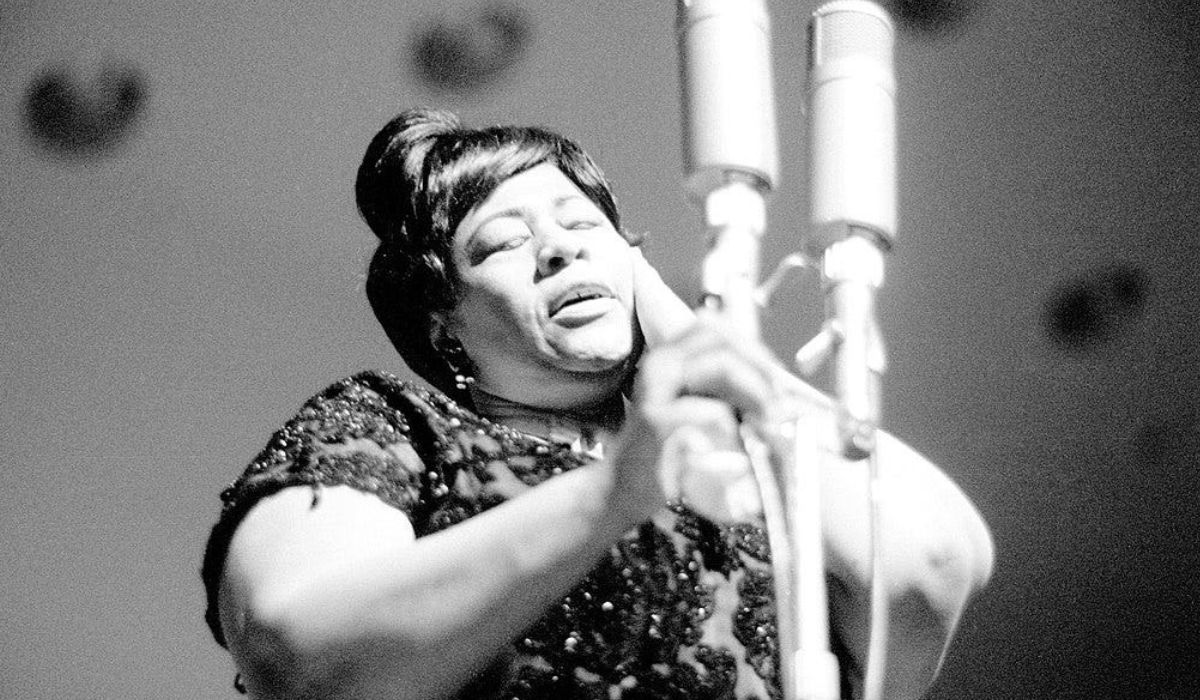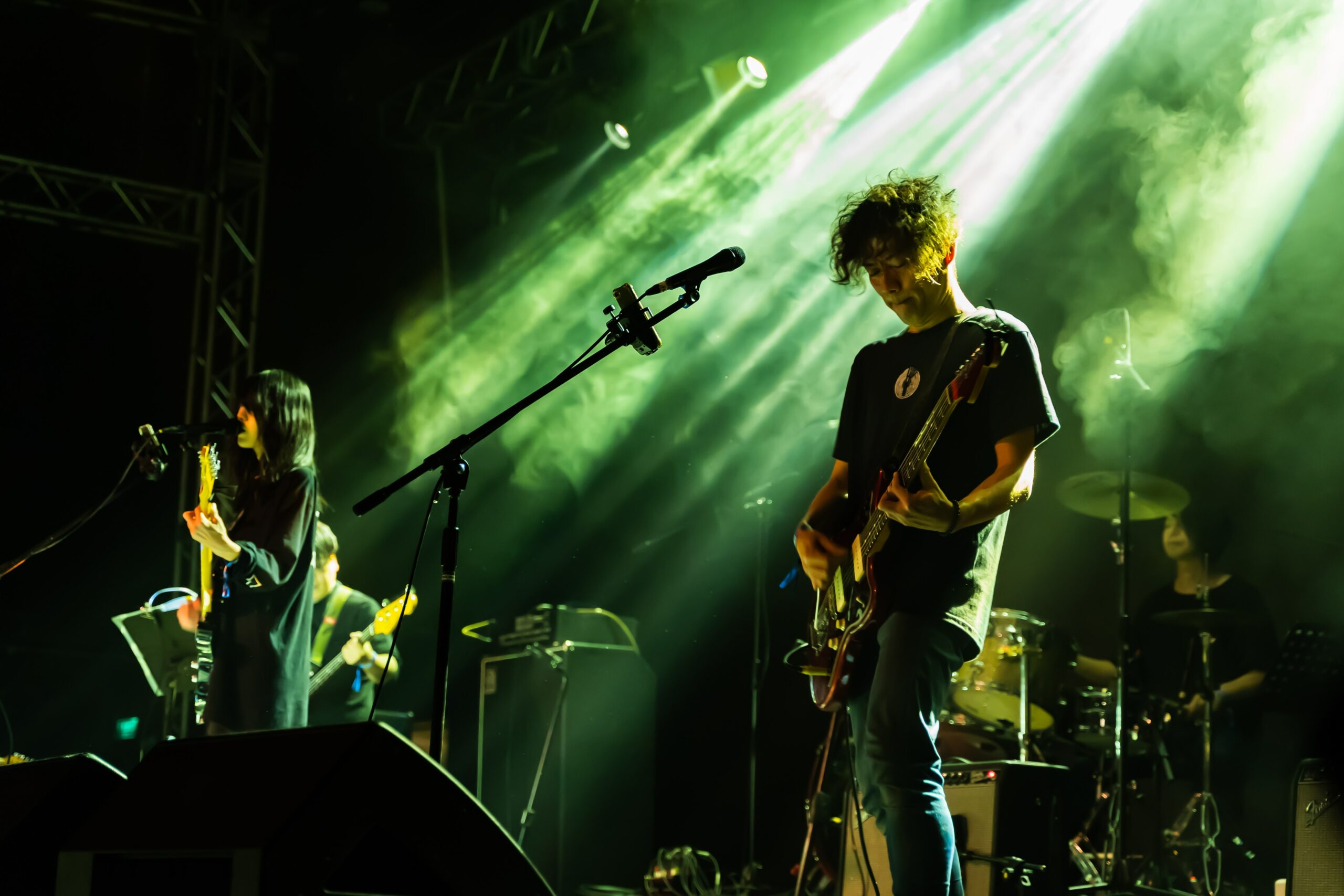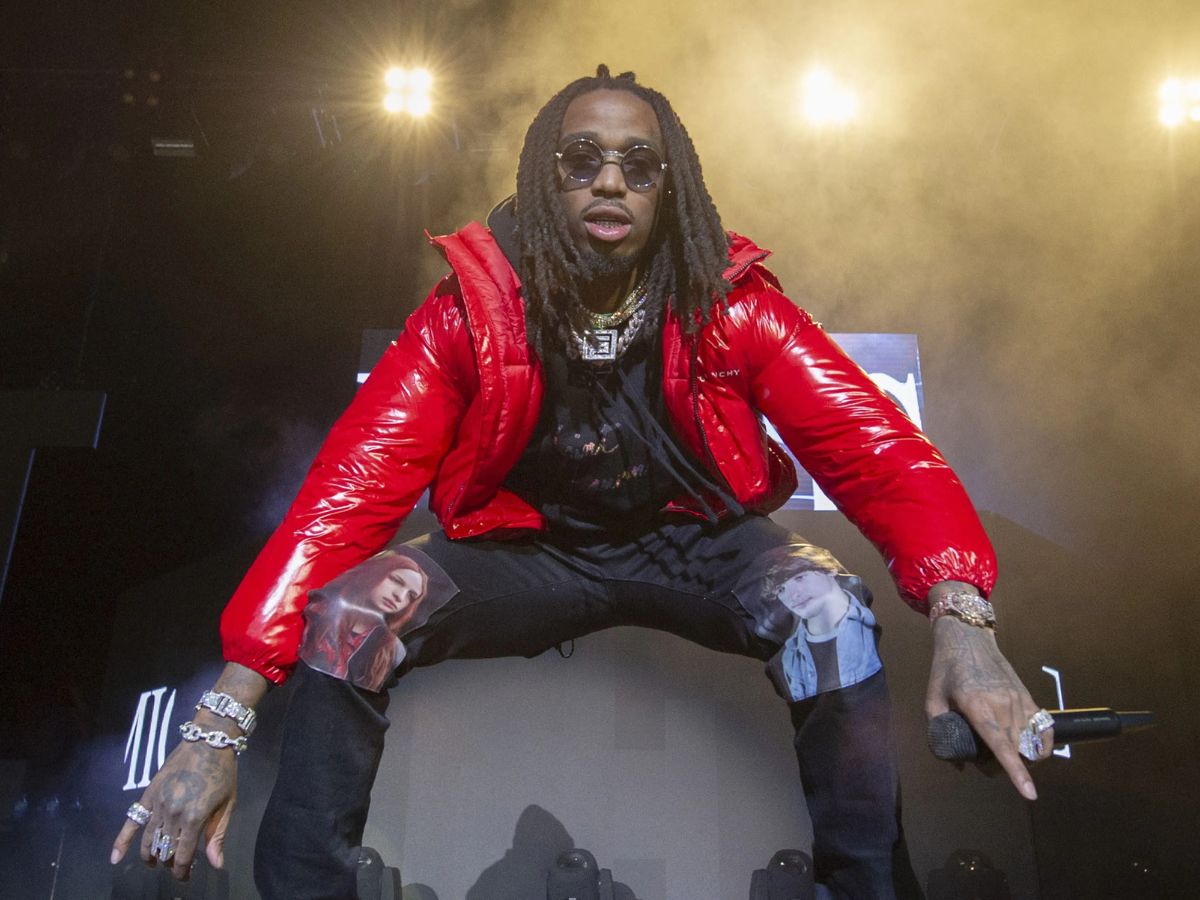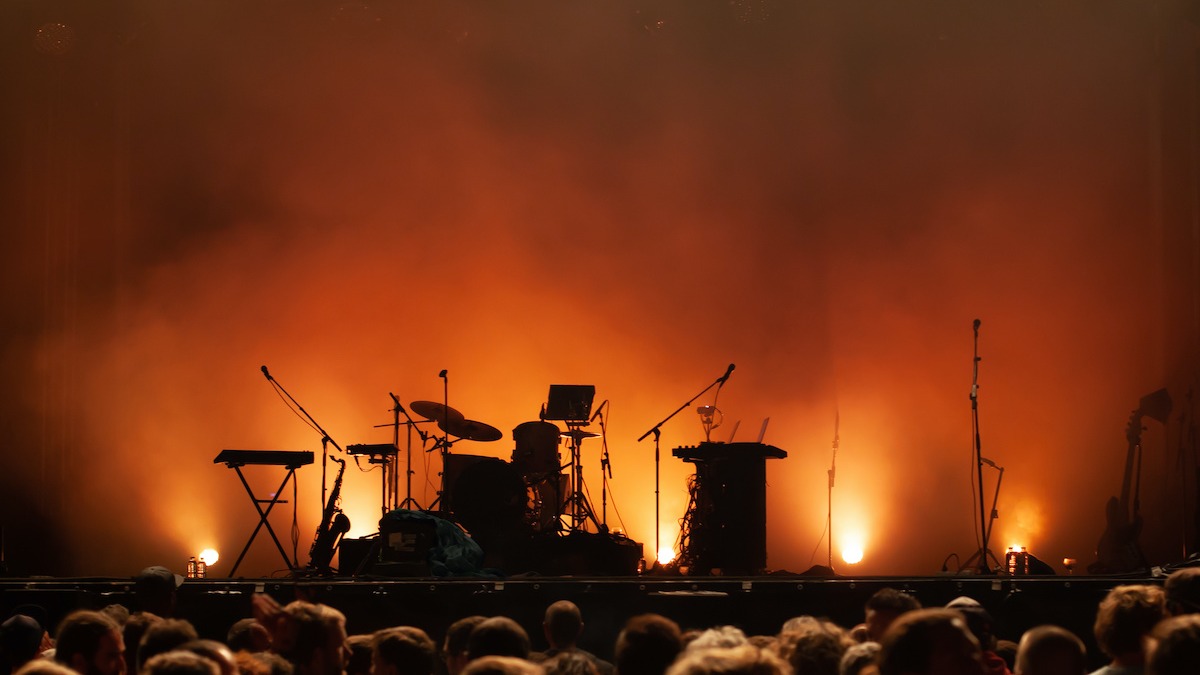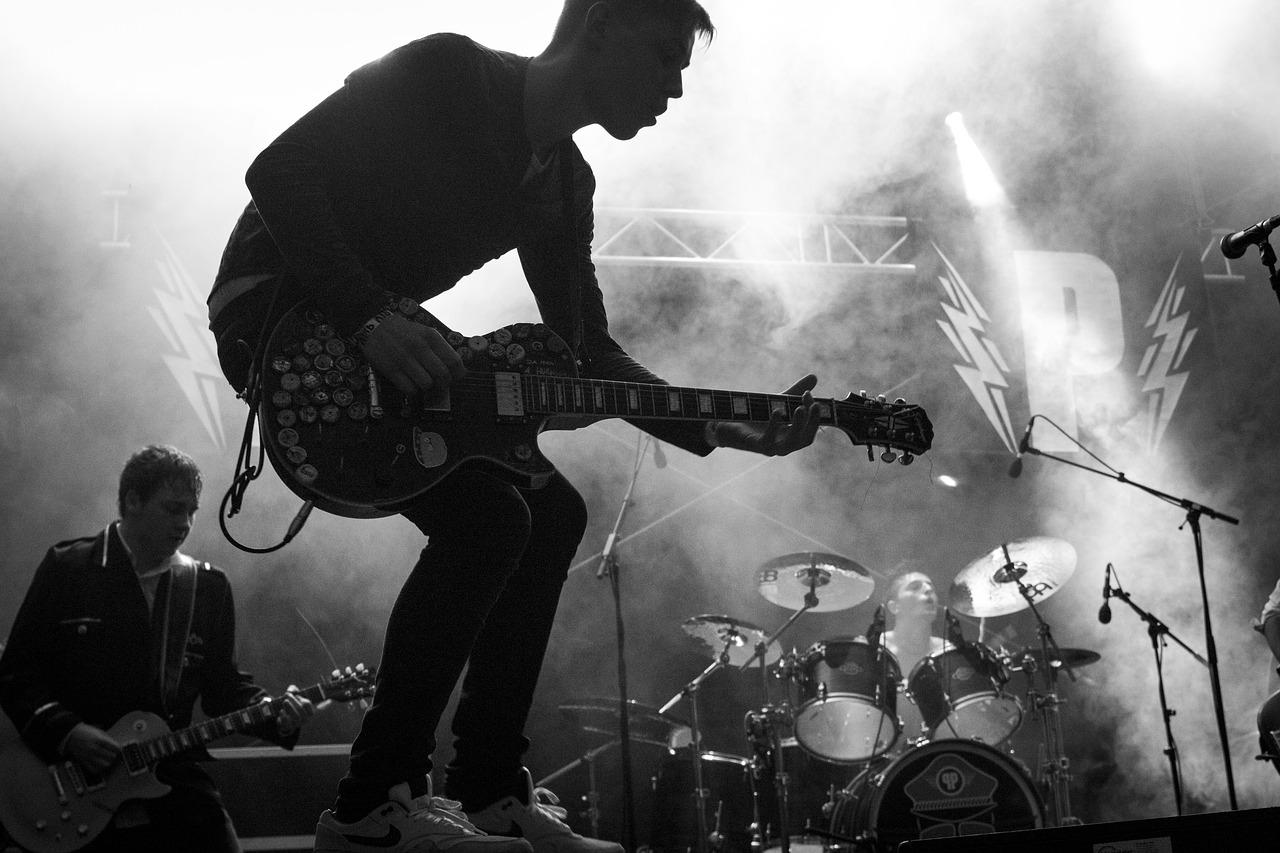Home>Genres>Rock>What Type Of Concerts Is Rock Music Known For?


Rock
What Type Of Concerts Is Rock Music Known For?
Modified: January 22, 2024
Find out what type of concerts rock music is known for! Experience the high energy and electrifying performances that only rock music can deliver.
(Many of the links in this article redirect to a specific reviewed product. Your purchase of these products through affiliate links helps to generate commission for AudioLover.com, at no extra cost. Learn more)
Table of Contents
- Introduction
- Rock Concerts: An Overview
- The Evolution of Rock Concerts
- Iconic Rock Concerts Throughout History
- Rock Concert Venues: From Clubs to Arenas
- The Impact of Technology on Rock Concerts
- Concert Elements that Define Rock Music
- The Powerful Energy and Intensity of Rock Concerts
- Rock Concert Culture: Fans, Fashion, and Community
- Notable Rock Music Genres and Their Concert Styles
- The Future of Rock Concerts
- Conclusion
Introduction
Rock music has a distinctive and influential presence in the music industry, with its powerful sound and rebellious spirit resonating with generations of music lovers. While rock music can be appreciated through recorded albums, its true essence comes to life in the form of live performances at rock concerts. From intimate club shows to massive stadium spectacles, rock concerts offer a unique and immersive experience that can’t be replicated elsewhere.
In this article, we will delve into the world of rock concerts, exploring their evolution, impact, and the elements that define them. We’ll take a look at iconic rock concerts throughout history, the venues that host these electrifying shows, and the technology that has shaped the concert experience. We’ll also touch on the vibrant rock concert culture, the fashion associated with these events, and the sense of community that fosters among fans.
Furthermore, we’ll explore the various subgenres of rock music and how they manifest in concert styles, from the raw energy of punk rock to the extravagant theatrics of progressive rock. And finally, we’ll ponder the future of rock concerts in an ever-changing music landscape.
Whether you are a devoted rock enthusiast or simply curious about the allure of these shows, join us as we embark on a sonic journey into the heart of rock music and the concerts that define its spirit.
Rock Concerts: An Overview
Rock concerts are more than just musical performances – they are experiences that ignite passion, evoke emotions, and create lasting memories. From the moment the lights dim and the first chord is struck, a rock concert becomes a communal celebration of music and a testament to the power of live performance.
What sets rock concerts apart is the raw energy and intensity that permeates the air. The driving guitar riffs, thunderous drum beats, and soaring vocals combine to create an electrifying atmosphere that captivates audiences. It’s a sensory overload, with the music vibrating through your body and the crowd’s enthusiasm reverberating in the air.
But a rock concert is not just about the music. It’s a visual spectacle that engages the eyes as much as it does the ears. Elaborate stage setups, dazzling light shows, and mesmerizing visual effects add a dynamic element to the performance, enhancing the overall experience and creating a multi-sensory journey for the audience.
Rock concerts also offer a sense of escapism – a chance for fans to let go of their everyday worries and immerse themselves in the music. The shared experience of being surrounded by like-minded individuals who share the same love for rock music creates a sense of community and belonging. In that moment, everyone is connected by the universal language of music.
Furthermore, rock concerts have a long-standing tradition of encouraging audience participation. From singing along to the lyrics, raising fists in the air, to crowd surfing and moshing, fans are actively involved in the performance, feeding off the energy of the band and each other. This participation adds an element of unpredictability and excitement, creating a unique concert experience each time.
Rock concerts also have the power to create lasting memories. Whether it’s witnessing a legendary band perform their greatest hits, discovering a new favorite artist, or simply being part of a mind-blowing show, these experiences are etched into the minds and hearts of concert-goers forever. It’s not just about the music, but the emotions and connections forged in those fleeting moments.
In the next sections, we will explore the evolution of rock concerts, iconic rock performances throughout history, and the venues that host these unforgettable shows. Join us as we dive deeper into the world of rock music and discover the magic of rock concerts.
The Evolution of Rock Concerts
Rock concerts have a rich and fascinating history, evolving alongside the genre itself. From humble beginnings in small clubs to dazzling arena spectacles, rock concerts have continuously reinvented themselves as the music and technology advanced.
In the 1950s, the rise of rock and roll brought about the birth of rock concerts. Early rock musicians, such as Elvis Presley and Chuck Berry, would perform live shows in small theaters and auditoriums, captivating audiences with their electrifying performances. These early concerts set the foundation for the energetic and visually engaging nature of rock concerts.
As rock music gained popularity in the 1960s and 1970s, concerts began to take on larger scales. The emergence of bands like The Beatles, The Rolling Stones, and Led Zeppelin saw rock concerts moving to bigger venues, such as stadiums and outdoor arenas, to accommodate the growing demand from fans. This era witnessed the birth of the iconic rock festival, with Woodstock in 1969 becoming a symbol of the counterculture movement.
In the 1980s, the advent of MTV and the music video revolutionized the concert experience. Bands started incorporating elaborate stage setups, synchronized lighting, and video screens into their performances, blurring the line between music and visual art. The rock concert became a theatrical production, with bands like Queen and Pink Floyd leading the way in delivering grandiose and immersive experiences.
The 1990s saw alternative rock take center stage, with bands like Nirvana, Pearl Jam, and Red Hot Chili Peppers drawing massive crowds to their shows. While the scale of concerts continued to increase, there was also a resurgence of smaller, intimate performances in clubs and theaters, allowing fans to connect with artists on a more personal level.
In the new millennium, advancements in technology brought about new possibilities for rock concerts. High-definition video screens, complex sound systems, and interactive elements allowed for even more immersive and visually stunning performances. Artists like U2 and Radiohead embraced these technological advancements, incorporating them seamlessly into their live shows.
Additionally, the rise of the internet and social media has transformed the way rock concerts are experienced. Fans can now livestream concerts, connect with fellow concert-goers through online communities, and share their concert experiences with the world in real-time. This digital era has enhanced the sense of community and global reach of rock concerts.
Looking to the future, rock concerts will undoubtedly continue to evolve alongside technological advancements and the changing tastes of music consumers. However, one thing remains certain – the spirit and energy of rock music will always have a home on the stage, where it can be fully unleashed and shared with passionate fans around the world.
Iconic Rock Concerts Throughout History
Throughout the history of rock music, there have been numerous iconic concerts that have left an indelible mark on both the music industry and popular culture. These legendary performances have become defining moments in the careers of artists and have achieved mythical status among fans. Let’s take a journey through some of the most memorable rock concerts that have shaped the landscape of music.
Woodstock Festival (1969): Often hailed as the epitome of the 1960s counterculture movement, Woodstock brought together half a million people for three days of peace, love, and music. Artists like Jimi Hendrix, Janis Joplin, and The Who delivered unforgettable performances, showcasing the power and spirit of rock music in an era defined by social change.
The Beatles at Shea Stadium (1965): This concert marked a turning point in the history of live performances. The Beatles’ performance at New York’s Shea Stadium drew a record-breaking crowd of over 55,000 fans, setting a precedent for the era of stadium rock concerts. It was a cultural phenomenon and a testament to the band’s unprecedented popularity.
Live Aid (1985): This historic dual-venue concert, held in London and Philadelphia, became a global phenomenon and a landmark moment in music history. With performances from iconic artists like Queen, U2, and David Bowie, Live Aid raised awareness and funds for the Ethiopian famine relief effort, showcasing the unifying power of music for a noble cause.
Pink Floyd’s The Wall Tour (1980-1981): Pink Floyd’s ambitious tour in support of their album “The Wall” featured an immersive stage production that brought the album’s concept to life. The iconic wall structure and groundbreaking visual effects combined with the band’s mesmerizing performance to create a theatrical experience like no other.
Nirvana on MTV Unplugged (1993): Known for their raw and energetic live shows, Nirvana surprised fans with their stripped-down acoustic performance on MTV Unplugged. This intimate and haunting concert showcased the band’s versatility and depth, solidifying their status as one of the most influential rock bands of the era.
Bruce Springsteen’s Born in the USA Tour (1984-1985): Known for his electrifying stage presence and marathon performances, Bruce Springsteen’s Born in the USA Tour became the stuff of legends. With countless energetic and emotionally charged shows, Springsteen captivated audiences and solidified his status as “The Boss.”
These are just a handful of the many iconic rock concerts that have left an indelible mark on music history. Each performance represents a unique moment in time, capturing the essence of an artist’s talent, the spirit of the era, and the connection between musicians and their devoted fans. They serve as a reminder of the power of live music to transcend boundaries and leave a lasting impact on both individuals and society as a whole.
Rock Concert Venues: From Clubs to Arenas
Rock concerts have been held in a wide range of venues, each offering a unique atmosphere and experience for both artists and fans. From intimate club shows to massive arenas, the choice of venue can greatly impact the energy and overall vibe of a rock concert.
Club venues have long been the breeding ground for up-and-coming rock bands. These smaller, more intimate spaces provide an up-close and personal experience, allowing fans to feel the raw energy of the music in a close-knit setting. Club venues often have a gritty and authentic feel, with the audience standing shoulder-to-shoulder, immersing themselves in the music and connecting with the band on a more personal level.
As rock music gained popularity, larger venues such as theaters and concert halls became the go-to destinations for rock concerts. These venues offered increased capacity, improved acoustics, and a more refined environment. The stage production at these venues often became more elaborate, with enhanced sound systems, lighting design, and video screens to create a visually captivating experience for a larger audience.
However, it was the rise of stadiums and outdoor arenas that truly revolutionized the scale of rock concerts. These massive venues could accommodate tens of thousands of fans, creating an electric atmosphere that reverberated throughout the space. Bands like U2, The Rolling Stones, and AC/DC have become synonymous with stadium shows, delivering epic performances on a grand scale.
One of the advantages of stadium concerts is the ability to incorporate elaborate set designs, massive video screens, and pyrotechnics. These larger-than-life productions transform the concert experience into a spectacle, with fans not only enjoying the music but also being visually dazzled by the stunning visuals on display.
In recent years, there has also been a trend of artists opting for unconventional and unique venues for their rock concerts. From parks and beaches to historical landmarks and even rooftops, these alternative settings offer a refreshing change of scenery and a chance for artists to create unforgettable and intimate experiences for their fans.
Additionally, the advent of technology has expanded the possibilities for rock concerts in unconventional venues. Livestreamed concerts, virtual reality experiences, and interactive performances have taken rock concerts beyond physical spaces, allowing fans from around the world to participate in the live experience from the comfort of their own homes.
Whether it’s a small club, a grand theater, or a sprawling stadium, the choice of venue for a rock concert plays a crucial role in shaping the overall concert experience. Each venue brings its own unique charm and aesthetic, providing artists and fans with a variety of options to experience and celebrate the power and spirit of rock music.
The Impact of Technology on Rock Concerts
Technology has had a profound impact on rock concerts, transforming them from simple musical performances to immersive, visually stunning spectacles. From advancements in sound systems and lighting to innovative stage designs and interactive experiences, technology has revolutionized the way rock concerts are experienced by both artists and fans.
One of the most significant advancements in technology is the improvement of sound systems. Modern concerts make use of powerful, state-of-the-art sound equipment that delivers crystal-clear audio to every corner of the venue. High-quality speakers, digital mixing consoles, and wireless technology ensure that every instrument, vocal, and detail of the music can be heard with utmost clarity. This has greatly enhanced the overall sound quality of live performances, allowing fans to fully immerse themselves in the music.
Lighting design is another area where technology has made a significant impact. Concerts now feature elaborate lighting rigs with programmable lights, lasers, and video projections that create mesmerizing visual landscapes. The synchronized lighting effects not only enhance the mood and atmosphere of the performance but also serve as a visual storytelling tool, enhancing the emotional impact of the music and captivating the audience.
Video technology has also played a major role in transforming rock concerts. Huge LED screens and video walls have become common fixtures on stage, displaying live footage, pre-recorded visuals, and artistic imagery that complement the music. These video elements provide an expansive visual experience, allowing fans seated far from the stage to have a closer view of the performers and feel more connected to the show.
In recent years, advancements in virtual reality (VR) and augmented reality (AR) have introduced new possibilities for rock concerts. VR technology enables fans to experience concerts as if they were physically present, immersing themselves in a virtual environment and enjoying a 360-degree view of the concert. AR technology, on the other hand, allows for interactive elements to be incorporated into performances, creating a unique and engaging experience for fans.
Furthermore, social media and streaming platforms have had a significant impact on rock concerts. Live streaming allows fans from around the world to watch concerts in real-time, breaking down geographic barriers that once limited access to live performances. Social media platforms provide a space for fans to connect and share their concert experiences, creating a global community of music lovers.
However, with the integration of technology, there are also debates about the authenticity of live performances. Some argue that the reliance on technology, such as auto-tune and pre-recorded backing tracks, can detract from the raw energy and spontaneity of live shows. Balancing technological enhancements with maintaining the authenticity and spirit of rock concerts is a challenge that artists and industry professionals continue to navigate.
The continued evolution of technology will undoubtedly shape the future of rock concerts, offering new ways for fans to engage with music, breaking down barriers for artists, and pushing the boundaries of creativity and innovation. As technology advances, so too will the possibilities for creating unforgettable experiences that push the limits of what a rock concert can be.
Concert Elements that Define Rock Music
Rock music has a distinct sound and performance style that sets it apart from other genres. When it comes to rock concerts, certain elements define and shape the overall experience. These elements contribute to the unique energy, intensity, and spirit that rock music is known for. Let’s explore some of the key concert elements that define rock music.
1. Raw Energy: At the heart of rock music is its raw and unbridled energy. Rock concerts are characterized by powerful guitar riffs, thunderous drumming, and high-octane vocals. It’s this energy that permeates every aspect of the performance, driving the audience to embrace the music and unleash their own energy in response.
2. Showmanship: Rock musicians are known for their captivating stage presence and showmanship. From Mick Jagger’s charismatic strut to Freddie Mercury’s commanding presence, iconic rock performers command the stage with confidence and charisma. Their ability to engage and connect with the audience elevates the concert experience to new heights.
3. Instrumental Proficiency: Rock music places a strong emphasis on instrumental prowess. From virtuosic guitar solos to intricate drum fills, rock concerts showcase the musicians’ technical skills and mastery of their respective instruments. These impressive displays of talent captivate the audience and add a layer of excitement and admiration.
4. Songcraft and Lyricism: Rock music is known for its compelling songwriting and evocative lyrics. Rock concerts provide an opportunity for artists to bring their songs to life, allowing fans to connect deeply with the music and its message. The lyrics often address themes of love, rebellion, societal issues, and personal struggles, resonating with audiences on a profound level.
5. Variety and Dynamism: Rock concerts are characterized by their dynamic nature, with songs ranging from soft, introspective ballads to high-energy anthems. These fluctuations in tempo, intensity, and mood keep the audience engaged and create a rollercoaster of emotions throughout the concert. The ability to seamlessly transition from heart-wrenching ballads to explosive rockers is a hallmark of rock music.
6. Audience Participation: Rock concerts thrive on audience participation. From sing-alongs to chanting choruses, fans actively engage with the music, adding their energy and voices to the performance. Bands often encourage crowd interaction, creating a sense of unity and shared experience among concert-goers.
7. Encores and Extended Jams: Rock concerts are infamous for their encores and extended jam sessions. After delivering a set of their most popular songs, bands often return to the stage for an encore, delighting fans with additional performances. These encores sometimes include impromptu jamming and improvisation, giving fans a unique and exclusive experience.
8. Rock Culture and Attire: Rock concerts have their own distinct culture and fashion. Fans often embrace the rebellious spirit of rock music through their clothing, wearing band shirts, denim jackets, leather attire, and iconic accessories. The attire worn by both fans and artists contributes to the overall aesthetic and atmosphere of a rock concert.
These concert elements come together to create an electrifying and immersive experience that defines rock music. From the raw energy of the performance to the dynamic range of the songs, rock concerts captivate audiences, delivering a powerful and unforgettable experience that showcases the true essence of this iconic genre.
The Powerful Energy and Intensity of Rock Concerts
Rock concerts are renowned for their unmatched energy and intense atmosphere, captivating audiences with a thrilling and immersive experience. The power and intensity of rock music are magnified in a live setting, creating a unique connection between the performers and the crowd. Let’s explore the elements that contribute to the electrifying and adrenaline-pumping nature of rock concerts.
One of the defining features of rock concerts is the raw, unfiltered energy that permeates throughout the performance. The music itself, characterized by driving guitar riffs, thunderous drumming, and soaring vocals, embodies power and urgency. The sheer volume and intensity of the sound engulf the venue, creating a palpable energy that resonates with every concert-goer.
As the music reverberates through the air, it ignites a collective enthusiasm among the audience. Fans become caught up in the immersive experience, surrendering themselves to the music. They can’t help but move to the rhythm, jump, dance, and sing along, joining in the euphoria that sweeps through the crowd. This shared energy between the performers and the audience creates a symbiotic relationship, intensifying the overall atmosphere.
The presence and showmanship of rock musicians also contribute to the powerful energy of concerts. Dynamic stage performances, wild guitar solos, and energetic movements on stage radiate a contagious enthusiasm that spreads through the crowd. From jumping off amplifiers to running across the stage, these daring displays further amplify the intensity of the performance, feeding into the energy of the audience.
Rock concerts are also known for their explosive finales, with bands often saving their most anthemic and energetic songs for the end of the set. As the evening progresses, the energy in the venue builds to a crescendo. The crowd eagerly anticipates these climactic moments, and when the band launches into their most beloved hits, the atmosphere reaches a fever pitch. The combination of familiar melodies, powerful lyrics, and the collective passion of the audience creates an electric connection that can only be experienced at a live rock concert.
Visual elements also play a crucial role in enhancing the energy and intensity of rock concerts. Elaborate stage setups, lighting effects, and video projections synchronize with the music, stimulating the senses and immersing the audience in a multi-sensory experience. The pulsating lights, flashing strobes, and mesmerizing visuals heighten the impact of the music, adding an extra layer of excitement and drama.
The mosh pit, an iconic feature of rock concerts, serves as a physical manifestation of the intense energy. It is a space where fans can unleash their pent-up energy through aggressive dancing, jumping, and sometimes even crowd surfing. This chaotic yet thrilling experience further intensifies the raw power and energy of the rock concert, providing an outlet for fans to fully immerse themselves in the music.
Ultimately, it is the combination of the music, the enthusiastic crowd, the captivating performances, and the visual elements that contribute to the powerful energy and intensity of rock concerts. Each concert becomes a shared experience, a cathartic release, and a celebration of the passionate and rebellious spirit that rock music embodies.
Rock Concert Culture: Fans, Fashion, and Community
Rock concert culture is a vibrant and distinctive subculture that has developed around the genre, encompassing fans, fashion, and a sense of community. Rock concerts are more than just music events; they are gatherings that foster a deep connection between fans and provide a space for self-expression and camaraderie.
One of the defining aspects of rock concert culture is the passionate and devoted fanbase. Rock music has the ability to cultivate a strong sense of loyalty and fandom among its followers. Fans of rock bands often form communities, bonding over shared love for the music and the concert experience. Attending rock concerts becomes a way to connect with like-minded individuals who share a common passion.
Rock concert culture also extends to fashion and personal style. The dress code at rock concerts often reflects the rebellious and non-conformist spirit of the music. Fans often express themselves through their clothing, sporting band t-shirts, leather jackets, ripped jeans, and accessorizing with band badges and patches. This fashion aesthetic is not only a form of self-expression but also a way for fans to identify with the music and feel part of the rock concert culture.
Furthermore, rock concert culture embraces individuality and encourages fans to freely express themselves. In the crowd, you’ll find people of all ages, backgrounds, and walks of life coming together, united by their love for rock music. This inclusivity creates a supportive and welcoming environment, where fans can feel a sense of belonging and acceptance.
The energy and camaraderie found in the rock concert community are not limited to just the audience. Artists also play a crucial role in fostering this sense of community. Whether it’s through their lyrics, the way they engage with the crowd, or their social activism, rock musicians often inspire a strong devotion and connection among their fans. They become figureheads and symbols of a shared experience, representing the rebellious spirit and fight against injustice that rock music embodies.
Moreover, rock concerts provide an escape from everyday life and a space to let loose and embrace one’s true self. In this environment, societal norms can be temporarily set aside, and fans can find solace in the music and the community around them. Attending a rock concert becomes a form of catharsis, a release of pent-up emotions, and a way to connect with something greater than oneself.
Finally, the rock concert community extends beyond the time spent at the venue. Thanks to social media and online forums, fans can connect and engage with each other before, during, and after the concert. These digital communities provide a platform for fans to share their concert experiences, memories, and excitement, further strengthening the sense of community and connection.
In essence, rock concert culture is driven by the passionate devotion of fans, the fashion that reflects the spirit of the music, and the sense of community that fosters a space for self-expression and belonging. Through a shared love of rock music, fans come together to create a vibrant and inclusive subculture that celebrates the energy, rebellion, and camaraderie that define the rock concert experience.
Notable Rock Music Genres and Their Concert Styles
Rock music is a vast and diverse genre, encompassing various subgenres that have their own distinct style and concert experience. From the raw energy of punk rock to the theatricality of progressive rock, each subgenre brings its own unique flavor to the rock concert stage. Let’s explore some notable rock music genres and their concert styles.
1. Punk Rock: Known for its rebellious and DIY ethos, punk rock concerts are characterized by raw and aggressive performances. Often held in small, intimate venues, these concerts feature fast-paced music, intense stage presence, and a sense of urgency. Punk rock concerts are energetic and raucous, with fans actively participating through moshing, stage diving, and singing along to anthemic choruses.
2. Classic Rock: Classic rock concerts capture the nostalgia and timeless appeal of rock music from the 1960s and 1970s. With bands like Led Zeppelin, The Rolling Stones, and AC/DC leading the way, these concerts typically take place in large arenas or stadiums. The stage productions are grand, featuring elaborate set designs, impressive lighting displays, and larger-than-life performances that transport fans back to the heyday of rock.
3. Heavy Metal: Heavy metal concerts are known for their intense and thunderous performances. The music is characterized by heavy guitar riffs, aggressive drumming, and powerful vocals. These concerts often feature elaborate stage setups, pyrotechnics, and a high level of showmanship. The energy of the crowd is electrifying, with fans headbanging, forming mosh pits, and engaging in the iconic “devil’s horns” hand gesture.
4. Alternative Rock: Alternative rock concerts encompass a wide range of styles, from the angst-driven grunge of the 1990s to the melodic indie rock of the 2000s. These concerts typically take place in mid-sized venues, allowing for a more intimate and personal experience. Alternative rock concerts focus on authentic performances, with artists connecting emotionally with their audience through introspective lyrics and stripped-down performances.
5. Progressive Rock: Progressive rock concerts are characterized by their epic compositions, intricate instrumentation, and theatrical flair. These concerts often feature elaborate stage setups, mesmerizing visuals, and extended instrumental jams. Fans can expect immersive experiences with intricate light shows, multimedia projections, and conceptual storytelling that transport them on a transcendent musical journey.
6. Glam Rock: Glam rock concerts are known for their flamboyant and extravagant performances. With artists like David Bowie and Queen at the forefront, these concerts showcase elaborate costumes, theatrical makeup, and larger-than-life stage personas. The concerts are a celebration of self-expression and creativity, captivating the audience with over-the-top visuals and unforgettable performances.
7. Indie Rock: Indie rock concerts are characterized by their intimate and laid-back atmosphere. Often held in smaller venues, these concerts provide a more personal and interactive experience for fans. Indie rock concerts focus on the connection between the artist and the audience, with musicians often engaging in casual banter and performing in an unpretentious and authentic manner.
These are just a few examples of the many subgenres within the rock music umbrella, each with its own unique concert style. Whether it’s the high-energy and rebellious nature of punk rock or the grandiose and theatrical performances of progressive rock, rock concerts offer a wide range of experiences that cater to every taste and preference within the genre.
The Future of Rock Concerts
The landscape of the music industry is constantly evolving, and rock concerts are not exempt from this progression. As technology advances and audience preferences shift, the future of rock concerts holds both exciting possibilities and challenges.
One notable trend in the future of rock concerts is the integration of advanced technology. Virtual reality (VR) and augmented reality (AR) are likely to play a more prominent role, allowing fans to experience concerts in innovative and immersive ways. VR headsets could transport fans to the front row of a concert from the comfort of their own homes, breaking down geographical barriers and expanding the reach of live music experiences.
The use of holographic technology is also a possibility, enabling deceased or retired musicians to virtually perform alongside their living counterparts. This could give fans the opportunity to witness iconic artists once again and keep their legacies alive.
Continued advancements in live streaming technology will allow for enhanced virtual concert experiences. Artists may choose to perform exclusive live streams in addition to traditional in-person concerts, providing global access to their shows and reaching a broader audience.
Furthermore, innovative stage designs and production elements will continue to push the boundaries of what is possible in live performances. Artists may incorporate more interactive elements into their shows, blurring the lines between the performer and the audience. This could include live real-time interactions through social media platforms or digital audience participation.
Environmental sustainability is another important consideration for the future of rock concerts. With a growing focus on reducing carbon footprints, artists and organizers are likely to explore eco-friendly practices. This could include using renewable energy sources to power concerts, implementing waste reduction strategies, and encouraging fans to engage in sustainable behaviors during events.
Despite these technological advancements, the essence of a live rock concert will remain rooted in the connection between the musicians and the audience. The euphoria and energy created by being in a shared physical space will always be a unique aspect of rock concerts. The thrill and excitement of watching a favorite band perform live, surrounded by fellow passionate fans, cannot be fully replicated through technology.
However, it is important to strike a balance between embracing technology and maintaining the authenticity and organic nature of live performances. While advancements can enhance the concert experience, it is essential to preserve the human touch, spontaneity, and raw emotions that make a rock concert so captivating.
As the music industry continues to evolve, the future of rock concerts will be shaped by a blend of innovation, creativity, and the evolving needs and desires of music consumers. While the specific details of what lies ahead are uncertain, one thing remains constant – the enduring spirit and power of rock music will continue to thrive on the stage, captivating audiences and leaving an indelible mark on the hearts and souls of fans around the world.
Conclusion
Rock concerts have long been a cornerstone of the music industry, captivating fans with their powerful energy, immersive experiences, and sense of community. As we have explored, rock concerts have evolved over the years, from small club shows to massive stadium spectacles, incorporating advancements in technology and embracing a diverse range of subgenres. Throughout this evolution, the core elements that define rock concerts – the raw energy, the showmanship, the connection between artists and fans – have remained constant.
Looking ahead to the future, rock concerts will continue to adapt and innovate. Technology will play a crucial role, facilitating virtual experiences, expanding the reach of live performances, and enhancing the visual and audio components of concerts. Yet, it is essential to maintain the authenticity and passion at the heart of live rock music. The shared experience, the uninhibited expression, and the powerful connection between artists and fans are irreplaceable.
Rock concert culture, with its devoted fans, distinctive fashion, and strong sense of community, will endure. The fanbase will continue to grow and evolve, connecting through digital platforms and coming together in physical venues, united by their love for rock music and the immersive concert experience it provides.
As the future unfolds, rock concerts will continue to be a source of escape, inspiration, and emotional release for fans around the world. The power and spirit of rock music will continue to thrive on the stage, transcending boundaries, and leaving a lasting impact on all who are fortunate enough to experience the magic of a live rock concert.
So, whether you are a die-hard fan or someone who has yet to attend their first rock concert, prepare to be swept away by the electric atmosphere, the pulsating music, and the indescribable energy that can only be found in the world of rock concerts.

